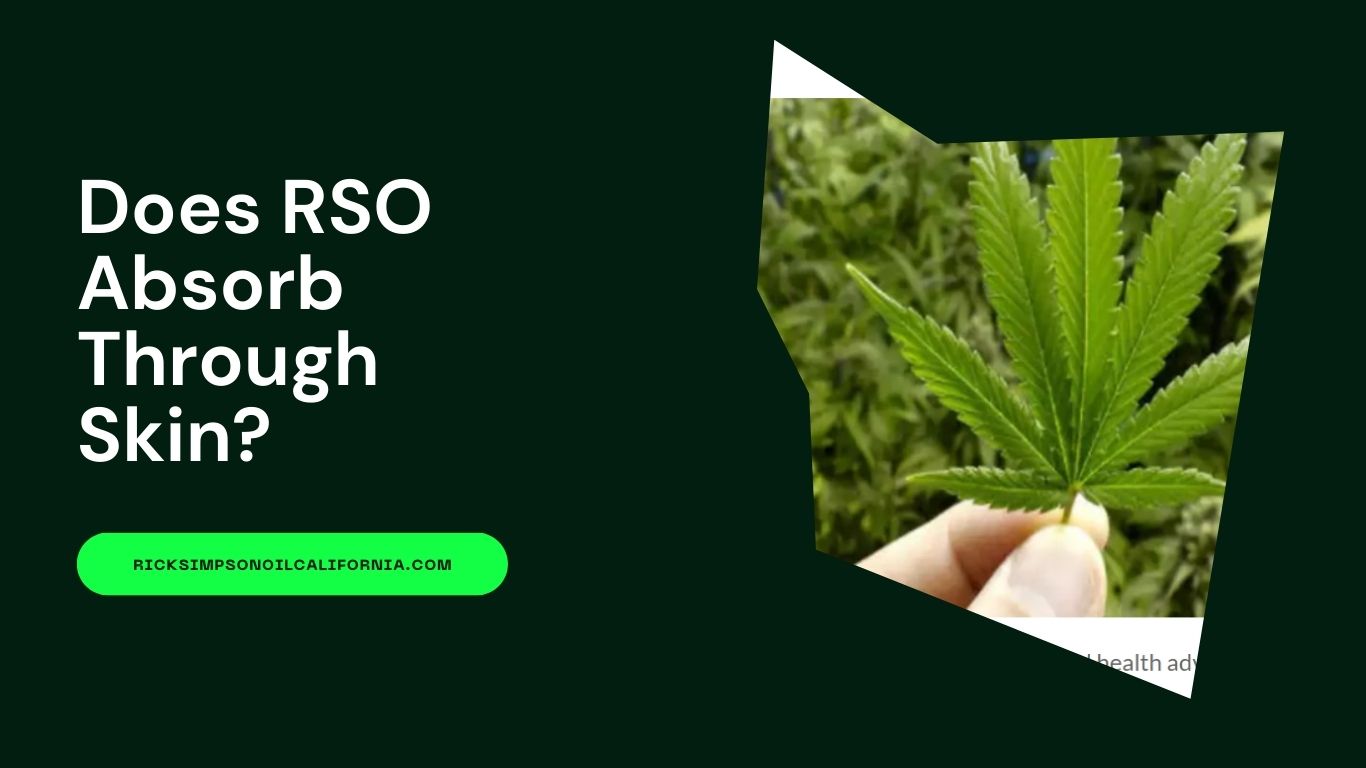Mon-Fri : 8am-5pm
Mon-Fri : 8am-5pm

The realm of cannabis use has evolved significantly over the years, with new research and anecdotal evidence highlighting its potential for health and wellness.
One area that has garnered attention is the topical application of cannabis, specifically, Rick Simpson Oil (RSO).
Many individuals are intrigued by the question: does RSO absorb through skin?
In this article, we delve into the science and offer expert insights to help you understand the intricacies of RSO and its absorption through the skin.
The scientific principle and empirical evidence suggest that RSO, containing active cannabinoids like THC and CBD, can absorb through the skin.
However, absorption depends on factors such as cannabinoid concentration, skin condition, and application method.
The topical application of RSO might offer potential health benefits like localized pain relief and skin health improvement.
Before we discuss skin absorption, let’s understand what RSO is. Rick Simpson Oil (RSO) is a cannabis oil product named after Rick Simpson, a Canadian medical marijuana activist who championed its use.
It is a full-spectrum extract, meaning it contains all the compounds found in the cannabis plant, including both THC (Tetrahydrocannabinol) and CBD (Cannabidiol). This full-spectrum approach is thought to encourage the entourage effect, where the different components work synergistically to enhance the overall effects.
Our skin is the body’s largest organ, and it has a sophisticated structure that can absorb and deliver certain substances into the bloodstream. RSO contains active cannabinoids, compounds known for their potential therapeutic properties. But does RSO absorb through the skin effectively?
The answer lies in the skin’s unique characteristics. Human skin has a protective barrier function that mainly allows only fat-soluble substances to pass through. Luckily, cannabinoids like THC and CBD are lipophilic, or fat-soluble, meaning they can indeed penetrate this barrier. So, in theory, RSO should be able to absorb through the skin.
However, this absorption is dependent on several factors. One is the concentration of cannabinoids in the product. The higher the concentration, the more likely the cannabinoids will be absorbed. The skin’s condition also plays a role. Dry or damaged skin may allow for better absorption than healthy skin. Furthermore, the method of application, such as whether the oil is massaged into the skin, can impact absorption rates.
While the idea of RSO absorbing through the skin is supported by scientific principles, it’s essential to look at empirical evidence.
Several studies have shown that cannabinoids can indeed be absorbed transdermally, or through the skin. A study published in the European Journal of Pain revealed that topical application of CBD led to a significant reduction in inflammation and pain-related behaviors in a rat model. This suggests that cannabinoids were absorbed through the skin to exert their effects.
Another study in the Journal of Pharmacology and Experimental Therapeutics showed that THC could be detected in the bloodstream of rats following the topical application of a THC solution.
Though more human studies are needed, these findings provide promising evidence supporting the idea that RSO can absorb through skin.
Understanding how Rick Simpson Oil (RSO) absorbs through the skin is not just an interesting scientific conundrum. It opens the gateway to several potential benefits for health and well-being. Here, we delve deeper into the advantages that the topical application of RSO can bring.
One of the primary benefits of the skin absorption of RSO is the potential for localized relief. This advantage can be viewed from two key perspectives:
The topical use of RSO presents a unique advantage of delivering cannabinoids without the associated psychoactive effects. This is particularly relevant when considering the consumption methods of cannabis products:
The potential benefits of RSO absorption through the skin extend beyond pain and inflammation relief. It could also contribute significantly to skin health:
By considering the potential benefits of RSO skin absorption, it becomes clear why this topic has generated such keen interest. Whether it’s providing localized relief, delivering cannabinoids without psychoactive effects, or improving skin health, the absorption of RSO through the skin could offer a unique pathway for harnessing the therapeutic properties of cannabis.
The question of does RSO absorb through skin invites a compelling discussion steeped in science, research, and potential health benefits. Evidence suggests that yes, the active cannabinoids in RSO can indeed be absorbed through the skin. This could open the doors for innovative uses of cannabis in the wellness sector, from pain management to skin health. However, more research is needed to fully understand the extent of this absorption and its implications for health and well-being.